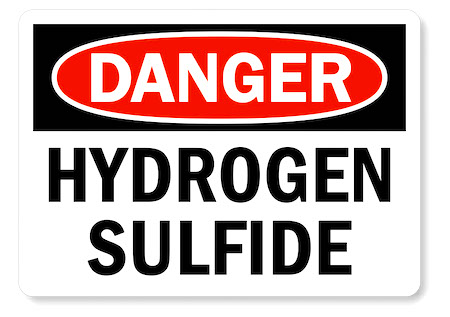
H2S, or hydrogen sulfide, is usually found in natural gas, and it’s highly corrosive. When not cared for properly, there’s a risk of H2S causing corrosion not only in gas transmission lines but in turbines and gas engines when employed as a fuel. When gas is sent to the pipeline or when it’s used as fuel, all H2S needs to be removed with traps in order to eliminate these risks.
H2S Dangers
Before we look at a couple of removal methods employed in this area, why should we be so concerned about removing H2S? In small quantities, hydrogen sulfide isn’t too dangerous, and we know this because it’s found in our bodies. If you’ve ever smelled the egg-like smell that comes when organic materials decay, this is H2S. As a result of the digestion process, we experience small amounts of H2S in the body.
With this in mind, the body can deal with tiny amounts. With the amount generated from industrial and manufacturing processes, this is a different story altogether. For example, numerous health problems result from inhalation, skin contact, and consumption. In severe cases, it also has the potential to cause death.
Unfortunately, exposure to hydrogen sulfide is much higher for those who work in paper mills, natural gas drilling operations, mining facilities, and similar environments. These industries are heavily regulated, and staff must be trained while adhering to the safety procedures laid out by the responsible party. What’s more, companies also need to provide the highest quality of equipment.
Removal Techniques
Currently, perhaps the safest solution for H2S removal is called the chemical injection system. Not only does this technique avoid emissions and the use of amine plants, but companies can also get started for a much smaller investment than the next method we will discuss.
Essentially, the idea with the chemical injection system is to clean the gas and rid it of all harmful components by injecting an H2S scavenger. In terms of other harmful components, this technique will remove the following problems; paraffin, hydrates, foaming, high salt content, corrosion, and scale.
As the second technique we want to discuss today, some companies will choose the gas sweetening system. As well as removing H2S, this system will remove CO2. Why is this important? Because carbon dioxide and water combined will create carbonic acid. By eliminating both components, we can remove the risk of a potential catastrophe. The gas sweetening system (GSS) is also often referred to as amine gas treating.
Once the removal of oil, water, and condensates has taken place, this process can begin. When companies use this technique, they must adhere to the safety measures provided by the NSC (National Safety Council) and the OSHA (Occupational Safety and Health Administration). In addition to this, there are specific regulations and specifications relating to the products used in the technique; these are governed by NACE International (National Agency of Corrosion Engineers).
These days, there are various solutions on the market that promise to remove H2S and CO2 from natural gases. Typically, any harmful gases left behind will be removed in the next cycle, so the danger is always removed.
In terms of other removal techniques, we’ve assessed the most common two, but some will use an absorption tower with water. Ultimately, the choice of method will all depend on the task at hand, company budget, regulations, and more.
